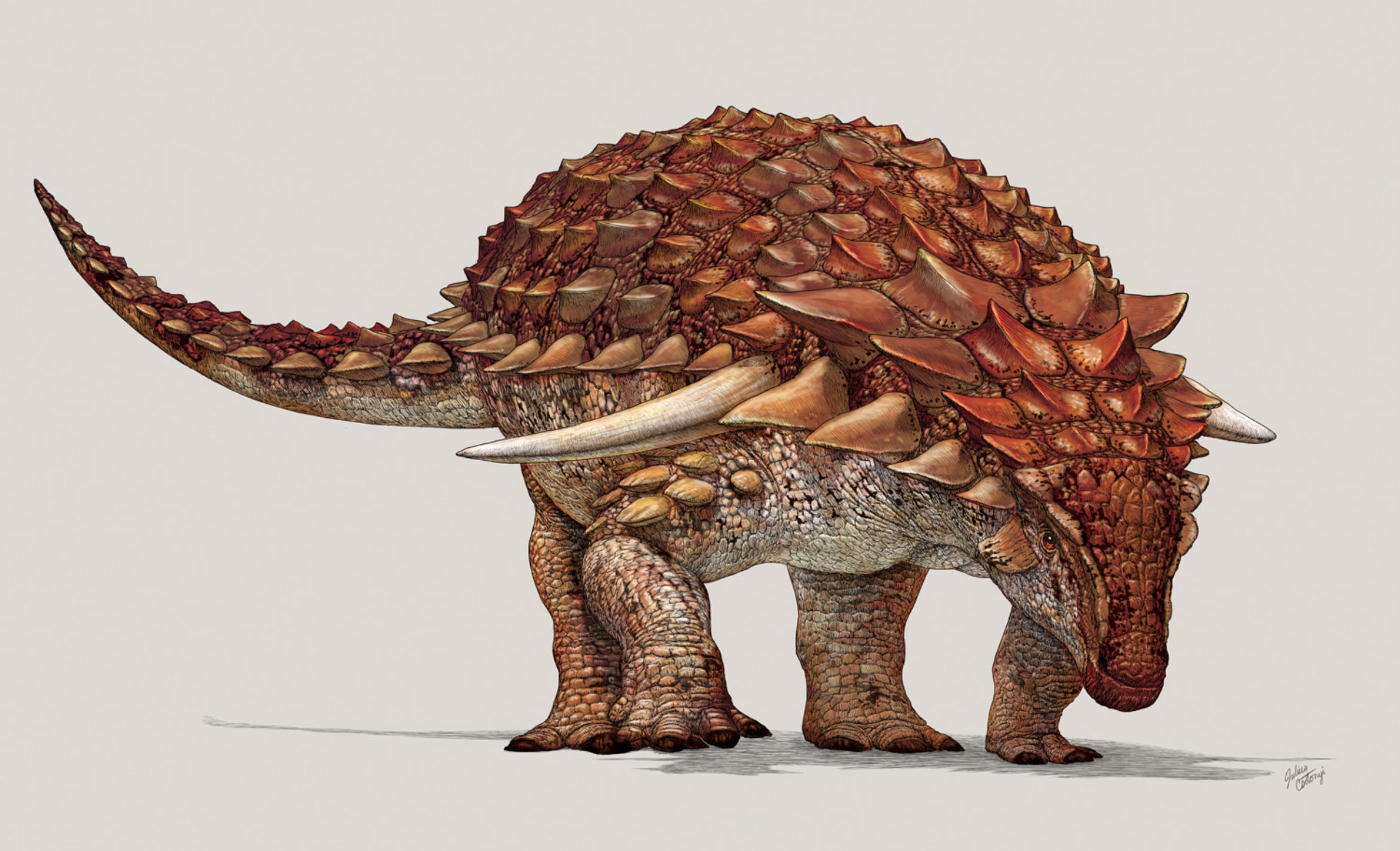-
Posts
68 -
Joined
-
Last visited
Content Type
Profiles
Forums
Calendar
Gallery
ARK News
Sponsored Mods
ARK Mobile News
Everything posted by DoggoAsHotdog
-
Name: Rugops Species: Rugops Primus Time Period: Late Cretaceous Temperant: Aggressive Credit goes to W. Rex Rugops in Ark Extinction: Rugops, the mighty carnivorous dinosaur, could possess an ability called "Primal Roar." When activated, Rugops lets out a powerful roar that temporarily boosts the attack and defense stats of nearby allied creatures. This primal aura of strength and intimidation can turn the tide of battle in your favor, making Rugops a valuable asset in group engagements. So, unleash the primal power of Rugops and dominate the Extinction! 🦖🔥💪 Rugops can be absolutely terrifying in Ark Extinction! With its sharp teeth, powerful jaws, and intimidating presence, Rugops is a force to be reckoned with. It can swiftly take down smaller creatures and even pose a threat to larger ones. Approach with caution or be prepared to face the wrath of this fearsome predator! 🦖😱💥 Rugops can be Ark's ultimate boogeyman! With its stealthy movements, razor-sharp claws, and bone-chilling roars, Rugops can haunt the nightmares of survivors. It lurks in the shadows, striking fear into the hearts of those who dare to cross its path. Beware, for the Rugops is the stuff of legends and tales whispered around the campfire! 🦖😱🔥 Rugops in Ark Survival Ascended can be an absolute nightmare fuel! Its menacing presence, blood-curdling roars, and relentless pursuit make it a fearsome adversary. With its sharp teeth and powerful attacks, Rugops strikes fear into the hearts of even the bravest survivors. Prepare yourself for a bone-chilling encounter with this terrifying predator! 🦖😱💀 Credit goes to NixAndNitz Rugops in Ark Extinction can be incredibly creepy! With its eerie appearance, haunting growls, and ability to seemingly appear out of nowhere, Rugops can send shivers down your spine. Its stealthy nature and unsettling presence make it a true nightmare-inducing creature. Don't let your guard down, or you might find yourself face to face with this bone-chilling predator! 🦖😱🌑 for a tamed Rugops in Ark Extinction where they have an increased chance of finding and collecting valuable loot from defeated enemies? It would make Rugops an excellent companion for treasure hunting and looting adventures! 🦖💰💎 When it comes to comparing Ark's Carnotaurus and Rugops, both dinosaurs are formidable predators in their own right. The Carnotaurus is known for its speed and agility, making it a swift and deadly hunter. On the other hand, Rugops possesses a more eerie and intimidating presence, with its unique appearance and bone-chilling roars. While both creatures can strike fear into the hearts of survivors, Rugops adds an extra level of creepiness to the mix. It's like comparing a fast and ferocious predator to a lurking nightmare in the darkness! 🦖😱🏃♂️🌑 To tame the horrifying predator Rugops in Ark Extinction, you'll need to use the standard taming methods. Prepare some tranquilizer darts or arrows, along with plenty of narcotics and food for the taming process. Approach Rugops cautiously, aim for its body, and deliver the tranquilizers to weaken it. Once it's unconscious, feed it the appropriate food to gain its trust. Be patient, as taming Rugops can be a thrilling and challenging experience! Good luck! 🦖🎯🍖 Rugops can be found in the wastelands of Ark Extinction. They are known to roam the desolate areas, such as the Desert and Snow biomes. Keep an eye out for their distinctive appearance and fierce demeanor while exploring these regions! 🦖🌵❄️ The saddle for the terrifying predator Rugops in Ark Extinction would be designed to match its bone-chilling nature. It might have a dark and menacing appearance, with sharp spikes or jagged edges, reminiscent of the predator's fearsome teeth. The saddle could also incorporate eerie elements like skeletal motifs or glowing accents, further enhancing the overall terrifying aesthetic. Riding on such a saddle would make you feel like you're harnessing the true power and terror of Rugops! 🦖😱🔥 Rugops in Ark Extinction is perfect for Halloween because of its bone-chilling appearance and eerie characteristics. Imagine encountering this terrifying predator in the dark, with its glowing eyes and haunting roars sending shivers down your spine. Its unique abilities and sinister presence make it a perfect addition to the Halloween-themed gameplay. Taming and utilizing Rugops during this spooky season would add an extra level of thrill and excitement to your Ark adventures. Get ready for a bone-chilling Halloween with Rugops in Ark Extinction! 🦖😱🎃🌑 People in the Ark Survival Evolved community should vote for the bone chilling predator Rugops for Ark Extinction because it adds a whole new level of terror and excitement to the game. With its eerie appearance, haunting roars, and unique abilities, Rugops would bring a fresh and spine-chilling experience to players. Imagine the thrill of encountering this fearsome predator in the wild and the satisfaction of taming and utilizing its bone-chilling power. Voting for Rugops would unleash a new nightmare in Ark Extinction that players won't want to miss! 🦖😱🗳️ Rugops in Ark Extinction has a truly terrifying boogeyman appearance that will haunt your nightmares! With its dark, shadowy skin and glowing, malevolent eyes, it looks like it stepped straight out of a horror movie. Its sharp, serrated teeth are ready to tear through its prey, and its long, bony arms give it a menacing reach. The way it moves, with a sinister grace and an unsettling silence, will send chills down your spine. When Rugops lurks in the shadows, it becomes the ultimate boogeyman, striking fear into the hearts of even the bravest survivors. Be prepared for a bone-chilling encounter with this nightmare-inducing creature in Ark Extinction! 🦖😱🌑 Rugops with a pego in its mouth Credit goes to Cafnir for the Image above
-
- terrifying
- creature submission
- (and 8 more)
-

The Fluffy Jumping-Spider Tranq Bola - Maevia Eureka!
DoggoAsHotdog replied to Sovira's topic in Finalist Discussion archive
Yes more spiders -
The Borealopelta is a heavily armored herbivore that can take a lot of damage from predators. It has a unique ability to camouflage itself, making it difficult for predators to spot. It's also a slow mover, so it's best to keep it in a protected area. Since the Borealopelta is a heavily armored herbivore, it would likely be able to withstand many of the dangers of the Aberration environment, such as radiation and hazardous terrain. However, it may struggle with the lack of vegetation in some areas, so it would need to be placed in an area where it can easily access food. Additionally, the Borealopelta's ability to camouflage itself could be especially useful in Aberration, as it would allow it to blend in with its surroundings and avoid detection by predators. To tame a Borealopelta in Ark Aberration, you would need to first knock it unconscious using a tranquilizer. Once it's unconscious, you can feed it its preferred food, which is Rockarrot. You'll need to continue feeding it Rockarrot until the taming bar is full. It's important to note that the Borealopelta has a very slow taming process, so be prepared to wait a while. Once it's tamed, you'll have a heavily armored herbivore that can take a lot of damage and has the unique ability to camouflage itself. In Ark Aberration, the Borealopelta is a passive creature, meaning that it won't attack unless provoked. However, if it is attacked, it will defend itself with its heavy armor and large size. It's important to note that the Borealopelta's slow movement speed can make it vulnerable to predators, so it's best to keep it in a protected area. Additionally, the Borealopelta's ability to camouflage itself can make it difficult to locate, so be sure to keep an eye on it if you're in an area with predators. A tamed Borealopelta in Ark Aberration would be useful for protection against predators, as its heavy armor and large size make it a formidable opponent. Additionally, the Borealopelta's ability to camouflage itself can make it difficult for predators to detect, making it a great defense against surprise attacks. Finally, the Borealopelta's slow movement speed can make it a good choice for base defense, as it can be placed in a strategic location to protect your base from enemy attacks. Saddle? Unfortunately, it's not possible to craft a saddle for the Borealopelta in Ark Aberration. While the Borealopelta can be tamed and ridden, it does not have a saddle that can be crafted. Instead, you'll need to use the Borealopelta's natural abilities to your advantage, such as its heavy armor and camouflage, to protect yourself and your base. In Ark Aberration, you can find Borealopelta in the Aberration Trench, which is located in the deepest part of the Aberration map. The Aberration Trench is a dangerous area filled with radiation, hazardous terrain, and dangerous creatures, so be sure to come prepared with plenty of supplies and a strong team of creatures to help you navigate the area safely. Additionally, the Borealopelta can sometimes be found wandering in other areas of the map, but it's most commonly found in the Aberration Trench.
-
- nodosaurid
- ark aberration
- (and 7 more)
-
If Ark 2 gets delayed hopefully Ark Earrion gets to be the next map with new free dinosaur being Giant Guinea Pig Or Josephartgasia Monesi and a better creature vote I'm not saying a better creature vote just to be mean I'm a very nice fan of ark survival evolved I support this community much as I love to do so so maybe 5 new creatures should be picked from the highly voted creatures from the community while Josephartgasia will be a free creature please wildcard if Ark2 does get delayed is there a chance for a adorable Texas Longhorn Sized Guinea Pig To Come To Ark Earrion? Here's a feature for this dinosaur It will have all the breeds of guinea pigs example Silky Josephartgasia that would be cute and cool too.
-

New Dinosaurs/TLC but refreshed every few months
DoggoAsHotdog replied to LoadedCrysis's Suggestion in Game Suggestions Archive
Hi loadcrysis im a new fan of you im subscribe to your channel anyways When will we get new dinos for console? LoadedCrysis


